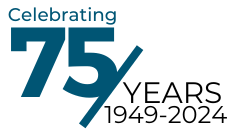One aspect of office design that deserves more recognition is color. Color plays an important role in designing an office, since it can dramatically impact how workers go about their workday. Some colors inspire people to be more productive, and poor color selection can be detrimental to your business. Learn about the psychology of color and see why color is so important in the design of the modern office.
Color Psychology
Color can have a substantial impact on someone’s mood and work output. This is detailed through color psychology, the study of color as a determinant behind particular human emotions. Simply put, when someone observes a specific color for a certain period of time, that person’s emotions may sway in a particular direction.
For example, it’s been observed that being surrounded by shades of blue can inspire someone to be more productive, thanks to the calm, serene vibes the color blue offers. Office designers have taken notice of this, and have tried to incorporate color in ways that make workers more productive. It became clear that choosing the right color for an office can substantially increase productivity levels among workers.
Improving a Worker’s Mood
Office workers typically have a lot to deal with, and are no stranger to occasional stress. Certain colors offer a soothing, relaxing vibe, and can ease the stress levels of someone having a rough day. By designing your office with relaxing colors, you can make your workers happier and less stressed during their workday.
Many office designers incorporate yellow, green, and orange into their designs when they want to improve the mood of employees. These lighter colors are easy to look at for long periods of time, making them perfect for workers with full 8-hour work days. These colors represent ideas like harmony and comfort, and help to inspire positive energy in any work environment.
Improving Productivity
While some colors are good at making people feel better, other colors inspire creativity and productivity. Uninspired designs can be boring to look at, and people who have to work in boring environments may find it harder to get their work done efficiently. To make it simple: a simple splash of color can help motivate workers.
Colors such as blue, red, and yellow are frequently used by designers who want to inspire workers to do the best that they can. Blue represents communication and trust, while red represents courage and excitement. They are colors that inspire workers, and when used correctly, can pick up any worker who is lacking motivation.
Color Selections to Avoid
Since many colors can have a positive impact on workers, it’s also expected that certain other colors can lead to negative results. In particular, overuse of white and gray is not advised, since they can make a room look drab. This doesn’t help to inspire creativity among workers and could create problems with general productivity levels.
On the opposite end of the spectrum, colors that are too bright can also be problematic. While colors like yellow can make a room look lively, they can also distract workers from their assignments if the shades are too bright. Lastly, using too many colors is also an issue, since the clashing colors may create eye strain.
Be smart about your color selection and use colors that complement each other.


